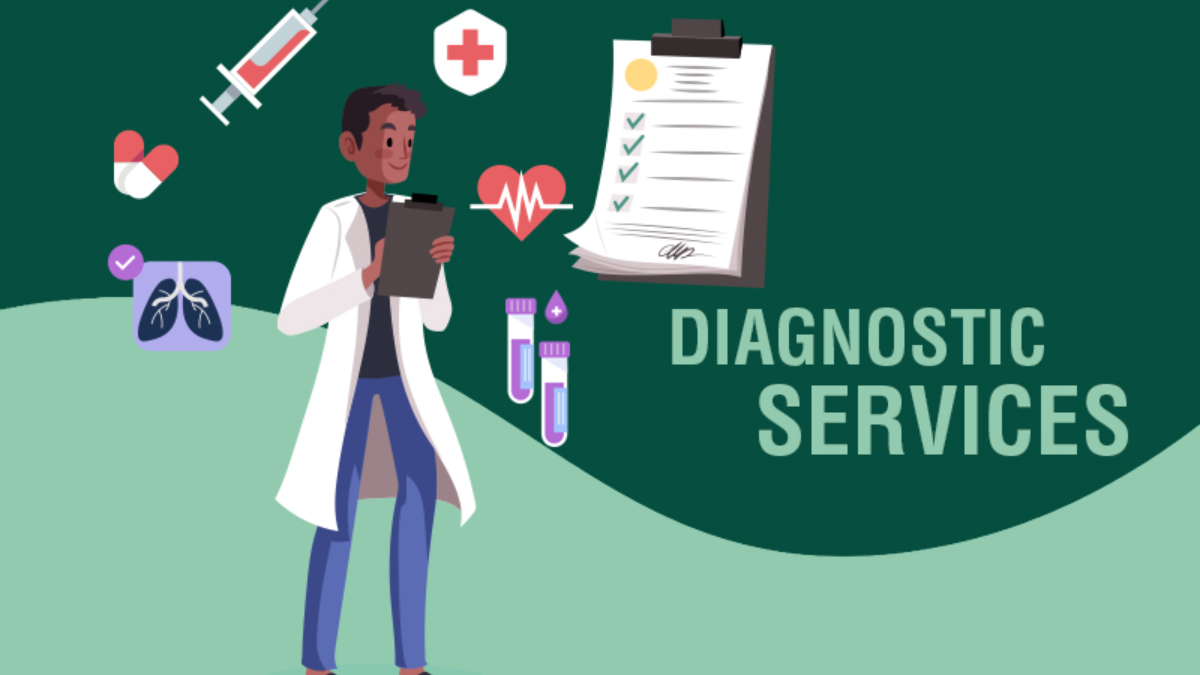Hospital laboratory and diagnostic services play a critical role in detecting, diagnosing, and monitoring diseases. Accurate and timely lab results guide doctors in making informed treatment decisions. These services include blood tests, urine analysis, microbiology, pathology, radiology, and other specialized investigations, ensuring comprehensive patient care.
Importance of Laboratory and Diagnostic Services
- Accurate Diagnosis: Helps identify diseases early and accurately.
- Treatment Monitoring: Tracks patient progress and response to therapies.
- Prevention of Complications: Detects issues before they worsen.
- Supports Research: Provides data for clinical studies and hospital research initiatives.
- Patient Safety: Ensures correct medications and interventions based on test results.
Types of Hospital Laboratory Services
1. Clinical Pathology
- Blood tests, urine analysis, and biochemical tests for diagnosing infections, anemia, diabetes, liver, and kidney diseases.
2. Microbiology
- Detection of bacterial, viral, fungal, and parasitic infections.
- Antibiotic sensitivity testing for proper treatment.
3. Histopathology
- Examination of tissue samples to detect cancer, inflammation, or other abnormalities.
4. Hematology
- Studies related to blood, blood-forming organs, and disorders like anemia, leukemia, and clotting problems.
5. Biochemistry
- Measures levels of enzymes, hormones, proteins, and electrolytes to monitor organ function.
6. Radiology and Imaging
- X-ray, CT scan, MRI, ultrasound, and mammography for structural and functional evaluation.
7. Molecular Diagnostics
- DNA, RNA, and genetic testing for hereditary diseases, infections, and personalized medicine.
Role of Laboratory and Diagnostic Staff
- Pathologists: Interpret test results and provide reports.
- Laboratory Technicians: Conduct tests, prepare samples, and ensure quality control.
- Radiologists: Analyze imaging studies for accurate diagnosis.
- Nurses: Collect samples, assist patients, and maintain hygiene.
- Administrators: Manage records, scheduling, and compliance with regulations.
Equipment and Technology in Hospital Diagnostics
- Automated blood analyzers and centrifuges for precise lab tests.
- PCR machines and genetic testing equipment for molecular diagnostics.
- Digital X-ray, CT, and MRI machines for imaging.
- Laboratory information management systems (LIMS) for tracking samples and results.
- Tele-diagnostic platforms for remote consultations and second opinions.
Challenges in Hospital Laboratory Services
- High patient load leading to delayed results.
- Maintaining quality control and accuracy across tests.
- Integrating lab data with hospital records and EHR systems.
- Rapid adaptation to emerging diseases and new testing methods.
- Ensuring staff training for advanced diagnostic equipment.
Future of Hospital Laboratory and Diagnostic Services
- AI-Powered Diagnostics: Faster detection and interpretation of complex results.
- Point-of-Care Testing (POCT): Immediate results at patient bedside.
- Tele-Lab Services: Remote sample analysis and reporting for rural hospitals.
- Advanced Molecular Testing: Personalized medicine and early disease detection.
- Automation and Robotics: Reducing human error and improving efficiency.
FAQs on Hospital Laboratory and Diagnostic Services
1. Why are hospital laboratory services important?
They ensure accurate diagnosis, monitor treatment, and support patient safety.
2. Who works in hospital laboratories?
Pathologists, lab technicians, radiologists, nurses, and administrative staff.
3. What types of tests are conducted in hospital labs?
Blood tests, urine tests, microbiology, histopathology, hematology, biochemistry, molecular diagnostics, and imaging.
4. How do lab results impact treatment?
They guide doctors in selecting medications, dosages, and monitoring therapy effectiveness.
5. What challenges exist in hospital diagnostic services?
High patient load, maintaining accuracy, data integration, new diseases, and staff training.
6. Can imaging studies detect early-stage diseases?
Yes, X-rays, CT scans, MRI, and ultrasound help detect conditions early.
7. What is molecular diagnostics?
Testing DNA, RNA, and genes to detect hereditary diseases, infections, or guide personalized treatment.
8. How does technology improve lab services?
Automation, AI interpretation, LIMS systems, and tele-diagnostics increase accuracy and speed.
9. Can labs provide results remotely?
Yes, tele-lab services and digital reporting allow remote access to test results.
10. What is the future of hospital diagnostics?
AI-powered diagnostics, point-of-care testing, tele-lab services, molecular testing, and robotic automation.

